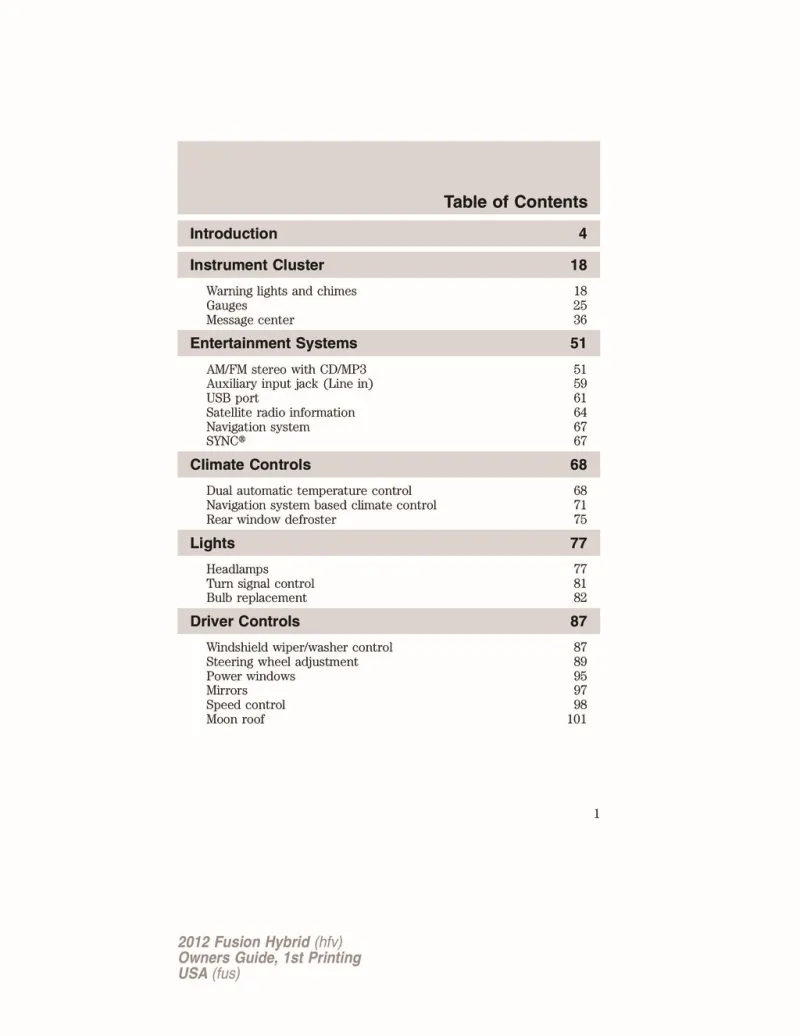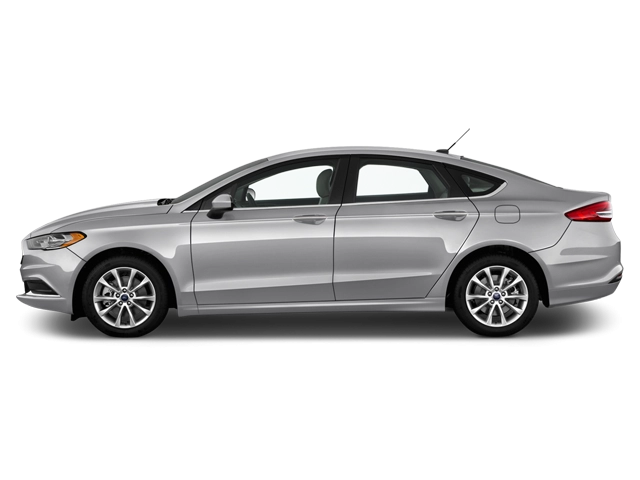2012 Ford Fusion Hybrid Owner's Manual

Table of Contents
2012 Ford Fusion Hybrid Overview
Introduction
The 2012 Ford Fusion Hybrid stands out in the midsize sedan market, boasting an eco-friendly design without compromising on performance and style. This versatile car marries Ford's reliable engineering with cutting-edge hybrid technology, making it an excellent choice for environmentally conscious drivers who still value driving excitement. With a blend of sophistication and functionality, the Fusion Hybrid caters to a diverse range of driving needs.
Powertrains
Under the hood, the 2012 Ford Fusion Hybrid features a highly efficient 2.5-liter four-cylinder engine, complemented by a 120-horsepower electric motor. Together, they deliver a combined output of 191 horsepower. The hybrid system employs a continuously variable transmission (CVT) that seamlessly transitions between electric and gasoline power, optimizing fuel efficiency. The Fusion Hybrid achieves an impressive EPA-rated 41 mpg in the city and 36 mpg on the highway, making it a top contender for those seeking greater fuel economy.
Trims
The 2012 Fusion Hybrid comes in a single, well-equipped trim that includes numerous standard features, with an optional Premium Package available for enhanced luxury. The distinctive styling is paired with a comfortable, spacious cabin, providing ample space for five passengers along with a generous trunk area. Standout features include 17-inch alloy wheels, automatic climate control, leather upholstery, and a premium audio system.
Features
This Ford model doesn’t skimp on technology, offering conveniences such as Ford's SYNC system, which integrates hands-free calling and streaming entertainment. Safety is prioritized with features like anti-lock brakes, stability control, and a comprehensive airbag system, ensuring peace of mind for drivers and passengers alike.
Owner's Manual
The 2012 Ford Fusion Hybrid comes with a comprehensive owner's manual, detailing maintenance schedules, troubleshooting tips, and specific instructions to optimize the vehicle's hybrid performance. This ensures that owners can fully understand their car's capabilities and keep it running smoothly throughout its life, offering a hassle-free ownership experience.
User manual download
The Ford Fusion Hybrid owner manual for the 2012 model year is to be found in PDF downloadable format on this page. The owner manual for the model year 2012 is free and in English, but the repair manuals are usually not easy to get and may cost more.
Manual Questions
Fill the form below and someone will help you!

